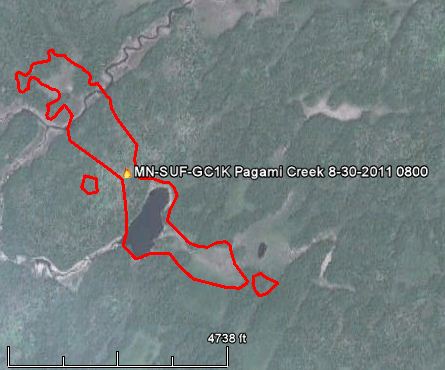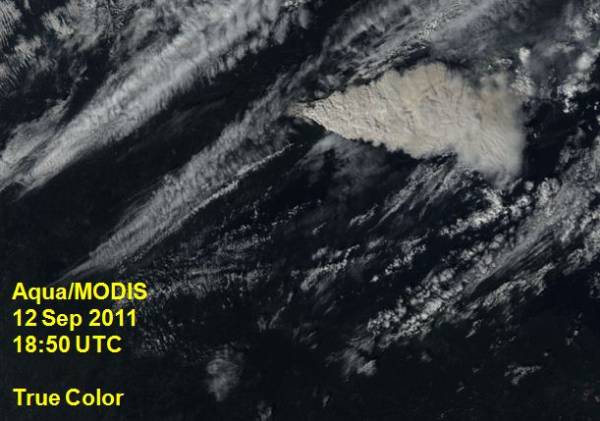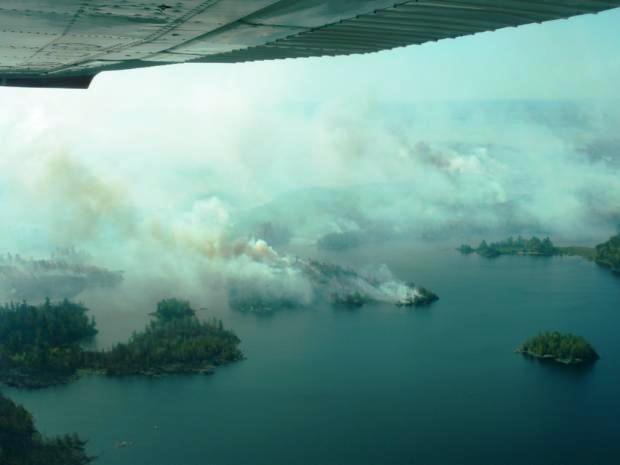
The latest update on the Pagami Creek fire which has burned over 92,000 acres in Minnesota’s Boundary Waters Canoe Area Wilderness was on October 22. At that time it was described as 93 percent contained and unstaffed. The federal government has spent $22.3 million dollars on suppression as of October 22.

When lightning ignited the fire on August 18, the Superior National Forest made a decision to not suppress it, but to herd it around as necessary to keep it within a reasonable maximum management area while allowing natural processes to do their thing. After 12 days it had only grown to approximately 130 acres, and fire management officials may have thought things were going well — until September 12 when everything went to hell. Strong winds gusting up to 35 mph spread the fire 16 miles to the east. HERE are some of the posts on Wildfire Today that mention the Pagami fire.
The StarTribune has a probing article written by Tony Kennedy that explores some of the decisions that were made during the early stages of the fire. It’s worth a read. Here is an excerpt:
===============================================================
Forest Service way off on BWCA fire projections
Records show the federal agency repeatedly underestimated the fire’s strength and volatility.
ELY, MINN. — A series of internal reports show that the U.S. Forest Service repeatedly underestimated the explosiveness of the Pagami Creek Fire during a critical 18-day stretch of late August and early September, allowing a half-acre burn to grow into a massive firestorm that left eight people fighting for their lives inside the Boundary Waters Canoe Area Wilderness.
[…]
“We felt like we were being very proactive,” said Mark Van Every, head of the Kawishiwi Ranger District in Ely, where the fire command is based. “It just happened faster and further than we expected.”
In the future, he said, the Forest Service might order faster and wider evacuations. “I will make those closure areas broader if I feel there is any potential at all that the fire could get there,” Van Every said. He said officials will also recalibrate the tools used to judge how fast a BWCA fire can move.
Meanwhile, two public reviews are underway. One is focused on an incident that endangered six crew members trapped by fire on Lake Insula. Two female crew members were forced to abandon their canoe while paddling in a lake channel that became choked by fire, Van Every said. Four others beached their canoes on an island and took cover under life-saving gear and later rescued their freezing crewmates from a nearby shore.
[…]
The half-acre burn didn’t budge much for seven days. The U.S. Drought Monitor, produced by the National Weather Service, showed the area to be in the first stage of drought, known as “abnormally dry.” But Van Every and Tim Sexton, a forest ranger based in Cook, Minn., said other indicators didn’t suggest rapid rates of spread. The fire’s early behavior supported that thesis, they said.
Then, on Aug. 26, with Sexton covering for a vacationing Van Every, the humidity level dipped abnormally to 18 percent and winds blew from the northwest. What had been a slow-creeping fire with flames 6 inches high in the morning picked up and ran in a narrow band to the southeast.
[…]
Strategic burn
The Sept. 4 decision reflected firefighters’ growing concern about dry forest conditions. “Weather forecasts indicate that September will experience dry, windy weather with occasional frosts (which will cause leaf fall and add to the hazardous fuel loading),” the WFDSS report said. In addition, drought conditions would worsen to the “severe” level by Sept. 6.




